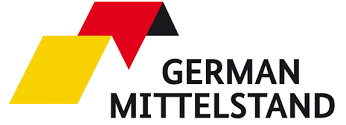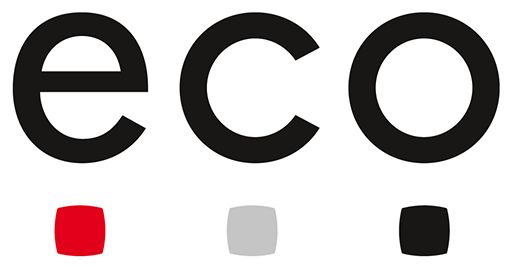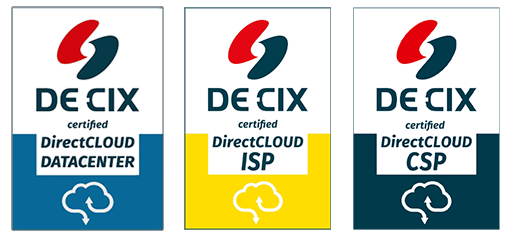Case study: transition of the client’s IT infrastructure to IaaS – abandoning obsolete solutions in favor of outsourcing
The CloudKleyer team is able to adapt to changing client requirements. And when the vector of the client business changes direction, we are always ready to offer a flexible solution that supports the new management concept. This case is an example of how we have provided a complete upgrade of the IT infrastructure and helped the business move from owning expensive outdated hardware to a service model of service provision, which allowed us to optimize costs, increase and simplify the administration of the IT system.
Case study on the transition of client IT infrastructure to the IaaS model
New team – new concept
One of our long–time clients is a large company operating in the field of e-commerce. Our cooperation started several years ago with the rental of dedicated servers. We organized the turnkey migration and allocation of IT infrastructure in our data center, took over all the technical support, and also helped to buy back the IBM server equipment that the company used. At that time, the acquisition of hardware into ownership and putting it on the balance sheet seemed like a logical step, since the client needed full control over the infrastructure.
For many years, the company used the traditional model of IT resource ownership. CloudKleyer provided classic data center services: colocation, technical support, remote hands, Internet connection and dedicated IP addresses. However, this approach later stopped meeting the client’s strategic goals.
The IBM hardware used by the client was already obsolete at the time of relocation. Over time, it became even more outdated, maintenance became more complex and expensive, and changing business requirements demanded greater flexibility. Against the backdrop of rising costs and growing technological gaps, the need to deeply transform the entire IT infrastructure and move to a more efficient and modern operating model became increasingly evident.
The turning point was October 2023, when the company replaced its IT team, including managers. Realizing the failure and futility of the existing system, they decided to completely change the concept of IT infrastructure organization. Instead of expensive maintenance of their own servers, it was decided to completely switch to the Infrastructure as a Service (IaaS) model, outsourcing maintenance and support to CloudKleyer. This allowed the company to optimize costs, get rid of obsolete hardware and get progressive, flexible IT solutions without capital expenditures.
CloudKleyer’s tasks in this project
- Organize the client’s transition from owning hardware to renting dedicated servers and cloud services.
- Instead of legacy infrastructure that harms business, implement a new fault-tolerant IT system with scaling feature.
- Minimize risks and ensure smooth operation of services at all stages of migration.
“We don’t know how it works”
When changes are required, there are always two ways: to patch holes in the old system or to completely rebuild the infrastructure. The new IT team selected the second option.
The acquaintance with these people began unexpectedly. At some point, two new names appeared in the contact list of CloudKleyer’s project manager: the new Chief Technology Officer (CTO) and the IT infrastructure director. These were the key specialists of the renewed team, who took control of the technical block and began to deal with what they inherited from their predecessors.
And they inherited a lot. The internal infrastructure was a complex and chaotic system, where fresh hardware was layered on top of the old. At the same time, the understanding of how everything was organized was very fragmented – one could say, it was practically non-existent. Unfortunately, when the IT staff was renewed, there was no handover as a fact – the engineers were simply given logins and passwords to log in without any explanations. Therefore, they had to understand the structure of the IT infrastructure literally blindly.
CloudKleyer was not involved in the internal organization of the client’s IT system, and we did not know the nuances of its organization. Under the service contract, we performed the functions of a provider and offered the agreed services in full. Everything from our side was correctly configured and functioned stably, in exact accordance with the agreements. Nevertheless, when we were asked to assist, we got involved in the process to help understand this “black box”.
An initial technical discussion was organized, during which the leaders of the client’s IT team honestly admitted to us, “We don’t know much about the current infrastructure. We need full information.”
Active work started right after the first call. The IT infrastructure director asked us for a full description of the system to assess its current state, analyze old hardware and identify weaknesses. We handed over all available documentation and connection diagrams, as well as engaged our engineers for technical consulting. CloudKleyer engineers conducted a detailed audit and provided data on the resource scope, network design, interconnections of components, the principles of system operation, critical nodes and potential vulnerabilities.
And this is where all the fun began.
Audit results: expensive, complicated, risky
The audit showed that there was no overall development strategy, the system functioned, but no one fully understood how. Inside there was a messy mixture of technologies and solutions accumulated over the years:
- individual servers remained from the times of the first team that purchased IBM hardware many years ago;
- a few more machines were later purchased to make up for the drop in performance;
- then the next team of IT specialists tried to improve the situation by chaotically adding new elements.
Legacy of the past: how old solutions hinder business development
When CloudKleyer engineers analyzed the current state in detail, several important issues became clear:
- A “zoo” of servers. Some of the hardware was old and had long been removed from vendor support (IBM), some were purchased later, but without a specific system. Servers of different generations and capacities, different storage systems, disparate connections – all this created chaos in management and made their maintenance difficult.
- High energy consumption. Obsolete servers consumed a lot of electricity, which inflated the budget excessively, and suboptimal load distribution between hardware increased overall operating costs.
- Lack of fault tolerance. Some critical services were running on separate physical machines, without redundancy. Any breakdown could lead to downtime.
- Scattered contracts. Historically, the client had multiple contracts: for racks, electricity, Internet, communication channels, and maintenance of hardware from different vendors. Each innovation was formalized with a separate order, resulting in a complex and confusing array of invoices. In addition, the conditions were constantly changing: the cost of electricity fluctuated, service tariffs were updated, and new items appeared in the contracts. All this made expenses non-transparent, made it difficult to agree on a budget and control spending.
- Deterioration of the data storage system. Due to the deterioration of the hardware, physical disks started to fail and had to be replaced frequently.
As each successive IT team contributed something different, as a result, there was no other option but to completely upgrade both the hardware and the very structure of the IT system. The new technical specialists assumed responsibility for the upgrade and asked CloudKleyer to develop a concept for comprehensive upgrade and optimization of the infrastructure.
Don’t wait until the issues with the IT system become critical. Start upgrading today!
Searching for the optimal solution
After analyzing the current IT infrastructure configuration, it became clear: we had to build a new system from scratch. However, the question was not only about technical implementation, but also about finances.
The IT Director clearly outlined his priorities:
- Stop owning physical hardware.
- Build a fault-tolerant system.
- Make the transition smooth, without sudden jumps in costs.
New strategy: giving up hardware ownership
Through several rounds of discussions, the new IT team decided to stop maintaining their own physical servers and implement an outsourced model of interaction with the provider.
We offered the following strategy:
- to replace old hardware with rented dedicated servers;
- migrate to a fault-tolerant, easily scalable architecture based on VMware vSAN (Virtual Storage Area Network) technology;
- consolidate different service contracts into a single contract with a fixed subscription fee, including electricity bill, to enable clear budget forecasting.
This plan was approved by the client, and the CloudKleyer team set about implementing it. First of all, at the request of the CIO, we simplified the financial model by consolidating all disparate payments into a single invoice, saving the client from complex approvals and cost confusion.
In addition, we gave the client the opportunity to make a smooth and gradual migration from one IT infrastructure to another within three months. Read about other benefits of this approach below.
How the approval process went
- First stage: discussing the options. We provided several proposals, but the key factor was the choice of hardware vendor. The client chose HPE as the vendor.
- Second stage: preparing the configuration. Vladimir Marchenko, IT director of CloudKleyer, developed a solution based on HPE DL380 Gen10+ servers and Nexus and FortiGate networking equipment. Then we agreed on the technical configuration with the client.
- Third stage: financial analysis. CloudKleyer’s project manager recommended the optimal transition to the new model scenario, convenient from the point of view of cost allocation.
- Fourth stage: the final adjustments. The client’s IT infrastructure director suggested adding S3 object storage for fault-tolerance and data encryption. CloudKleyer engineers supported this idea and integrated S3 into the project.
IT system upgrade: from concept to practical implementation
IT upgrade should not have disrupted business operations. To avoid disruptions, we transitioned to the new model consistently and very carefully, guided by the following principles:
- Smooth transit without abrupt shutdowns. The new system was launched in parallel with the old one, and the switching of services took place gradually.
- Minimal risks. Testing was carried out at all stages to make sure that the infrastructure was stable.
- Retention of control by the client. Our team worked closely with the client’s IT specialists throughout the entire migration process, adjusting settings according to their wishes.
How IT infrastructure modernization took place in this case study
1. New system deployment
The first step was to assemble and connect the new infrastructure based on HPE DL380 Gen10+, Nexus 9300 switches and FortiGate firewalls. In the data center, we prepared a separate rack for the new servers so that the client could work in the usual mode during the transfer.
2. Organizing a direct connection
For a seamless transition, we directly connected the old and new systems, enabling smooth data migration. This allowed the client’s IT team to run tests and migrate services in stages with minimal disruption.
3. Data storage system replacement
The next step was integration with the data storage. We connected an S3-storage based solution. This iteration became the key for further stability and reliability of the entire system.
| Old issue | Solution |
| Physical storages with worn-down disks that regularly fail | The client has completely abandoned their old storage system and moved to S3 object storage, which is a more secure and flexible alternative |
4. Launching the infrastructure and migrating critical services
Once the system was prepared on our side, the client’s IT engineers started working with it. First, they launched virtual machines and tested data backup. Then they relocated the L3 channel to Germany, migrated all VPN connections to the new system, updated public IP addresses, and migrated core services, including databases and applications.
5. Final stage: testing and finalizing the servers
Until the full migration, the old infrastructure is still online. This is necessary for insurance: if an unforeseen situation arises, the client will be able to quickly switch to the previous system.
In the new infrastructure, we decided to keep a few servers that were not as outdated as the other machines. However, they required a complete renovation, which was performed by CloudKleyer. Our engineers did the following:
- modernized and rebuilt the machines component by component;
- replaced and optimized disks so that the servers would better suit the client’s tasks;
- updated the firmware.
This work has already been completed. The servers have been connected and handed over to the client.
Now the final test is taking place. Earlier the system was tested in test mode, but now the client has started full-scale testing under real load. Such tests are necessary to make sure that the new infrastructure is stable before the complete shutdown of the old servers.
If the testing is successful, the client will finally be able to say goodbye to its historical infrastructure. The obsolete hardware will be scheduled for decommissioning at the end of March.
By the way, the client handed over the outdated servers to CloudKleyer, jokingly offering to open an IBM museum and even sell tickets to those who want to see these artifacts.
Case study results: transition to the IaaS model – a new level of reliability and convenience of IT infrastructure
CloudKleyer helped the client not only to upgrade resources, but also to change the very approach to IT system management. Instead of outdated, disparate hardware, the company now has a modern, fault-tolerant, scalable infrastructure, which operates under IaaS model and is fully customized to meet the needs of the business.
IaaS model implies not only the renting of servers, but also full outsourcing of IT infrastructure with a guarantee of reliability and transparent pricing. IaaS allows shifting the focus of attention from IT to strategic business development.
What has changed fundamentally
No more ownership of hardware
It is no longer necessary to purchase, maintain and upgrade physical servers on your own. After the transition to a service model, this is the responsibility of the service provider. Now all solutions are provided by CloudKleyer within the framework of IaaS.
A service level agreement (SLA) is signed with us as a service provider. It defines specific standards of quality, availability and other parameters of services that the provider is committed to provide to the client. SLA is a formal contract that describes the expected service metrics, such as infrastructure uptime, speed of response to requests, penalties for violation of these conditions, etc.
Accordingly, switching to an outsourcing model relieves the client of the headaches associated with hardware maintenance and upgrade, allowing them to focus on core business processes.
Transparency and predictability of costs
Instead of multiple bills for racks, electricity, Internet, and maintenance, there is a fixed subscription fee with three clear items of expenditures: infrastructure service, Internet, and a dedicated communication channel connecting regional nodes of a distributed IT system (in Germany and in another European country).
Optimized storage system
Physical storage with worn-down disks has replaced S3 object storage, which provides reliable data encryption and resource management flexibility.
Adaptability and scalability
The client chose vSAN technology, deciding to switch completely to a virtualized data storage system. CloudKleyer has not just implemented this solution, but adapted it to meet the real needs of the business.
Upon client’s request, we selected a powerful server base on HPE, coordinated models of switches and firewalls. In particular, for network protection, the client decided to use FortiGate, and we provided two such devices. The issue of FortiGate licensing is still open: at present the standard functionality is being used, but in the future the client may purchase subscriptions for in-depth traffic analysis and additional service protection.
One of the key objectives set in this case is flexibility and scalability. The new IT infrastructure has a resource reserve, and vSAN allows for easy capacity expansion: to increase storage, the entire system does not need to be rebuilt, just add additional server nodes.
In the next 2-3 years, the client will be able to easily expand the infrastructure, adding two to four servers, if necessary. We have already allocated technical reserves for network equipment and racks so that there are no limitations in scaling.
This approach gives the client freedom: the infrastructure is ready for growth, but does not require unnecessary investments “for the future”. CloudKleyer has provided exactly the model, which adapts to the needs of the business in real time.
Full monitoring of infrastructure
CloudKleyer has taken another issue off the client’s plate. We not only provide the hardware, but also monitor its operation 24/7:
- automatically identify and fix potential problems;
- respond to failures before they occur;
- provide technical support.
Benefits for accounting
The transition from ownership of hardware to the IaaS model gives the company significant financial advantages. First of all, the nature of expenditures is changing: large capital investments (CAPEX), which require depreciation and reflection on the balance sheet, are transformed into operating expenses (OPEX). This allows you to avoid large one-time investments and reduce the burden on the budget by distributing payments evenly, which simplifies financial planning.
Additional advantage is the predictability of the business. The company clearly understands what services it receives and how much it pays for them, which reduces the risks of unplanned costs for maintenance, repair and modernization of hardware.
Thus, the service model in the long term increases the flexibility and sustainability of the business, allowing to optimize the budget and focus on strategic development rather than on the management of IT assets.
Case study in numbers: compare “what it was” with “what it became” after IT infrastructure migration to IaaS model
| Aspect | Before transition | After transition |
| Management model | Ownership of physical hardware | Fully serviced model (IaaS) |
| Cost management, financial planning | Multiple invoices: rack rent, electricity bills, Internet bills, maintenance, etc. (8-9 separate contracts). Confusion, constant price changes, non-transparency, complicated coordination | All services are combined into one package with a fixed subscription fee. Transparency and predictability of costs are ensured |
| Accounting | Owned hardware is treated as assets and treated as capital investment, which makes it necessary to include it in the company’s balance sheet | The burden on working capital is reduced by attributing services to operating expenses. There is no need to reflect the hardware in the balance sheet. |
| Hardware | Long outdated IBM servers, hardware of different generation and performance, requiring regular replacement of components | New, well-designed infrastructure based on HPE DL380 Gen10+ |
| Data storing | Physical storage systems with worn-down disks | S3 object storage with encryption for high security and data availability |
| Stability and fault tolerance | Critical services were running on separate machines without redundancy. High risks | vSAN, dynamic scalability option, all critical services are protected by redundancy |
| Flexibility | Mixed hardware, scaling complexity | The option to add server nodes as needed without a global system rebuild |
| Network infrastructure | Diverse solutions without a common standard | FortiGate + Nexus 9300 with future expansions in mind |
| Monitoring and technical support | Disparate monitoring system, no unified control | Full monitoring by CloudKleyer, predictive failure analytics |
| Administration | The management and control of the infrastructure is entirely on the client’s side. | The IT infrastructure has been outsourced: CloudKleyer is responsible for administration, technical support, and performance assurance. |
This case study is an example of the benefits a business gets with IaaS implementation. Do you want the same transformation of your IT infrastructure? Contact us to develop an effective solution. Our experts will help you make a lossless transition.
The project timeline: from initial negotiations to implementation
Preparations for the project launch took several months.
- November 2023: getting to know each other, discussing the problem.
- Spring 2024: first negotiations, search for solutions, consideration of proposals.
- Summer 2024: the client temporarily suspended work, as they were simultaneously upgrading another data center outside Germany.
- November 2024: return to discussion, working out details, preparing final calculations, getting approvals.
- December 2024: the contract was signed, the hardware procurement process started.
- January 2025: disconnection of old resources, step-by-step transition to the new system.
At the time of publication of this case study, the main stages of the project have been completed, but work on the transition to the new infrastructure is still ongoing. The final stage is scheduled for the end of March 2025. From April, the company will be fully transitioned to the upgraded infrastructure.
Key specialists involved in the case implementation
| From CloudKleyer | From the client’s side |
|
|
The heads of the companies signed the contract and agreed on the budget.
IT innovations for your business with CloudKleyer
As a result of the modernization, the client’s infrastructure became more stable, secure and scalable, opening up new opportunities for the company.
If you are facing similar issues or looking for a solution to optimize your IT system, do not delay – contact CloudKleyer experts today and start transforming your business












